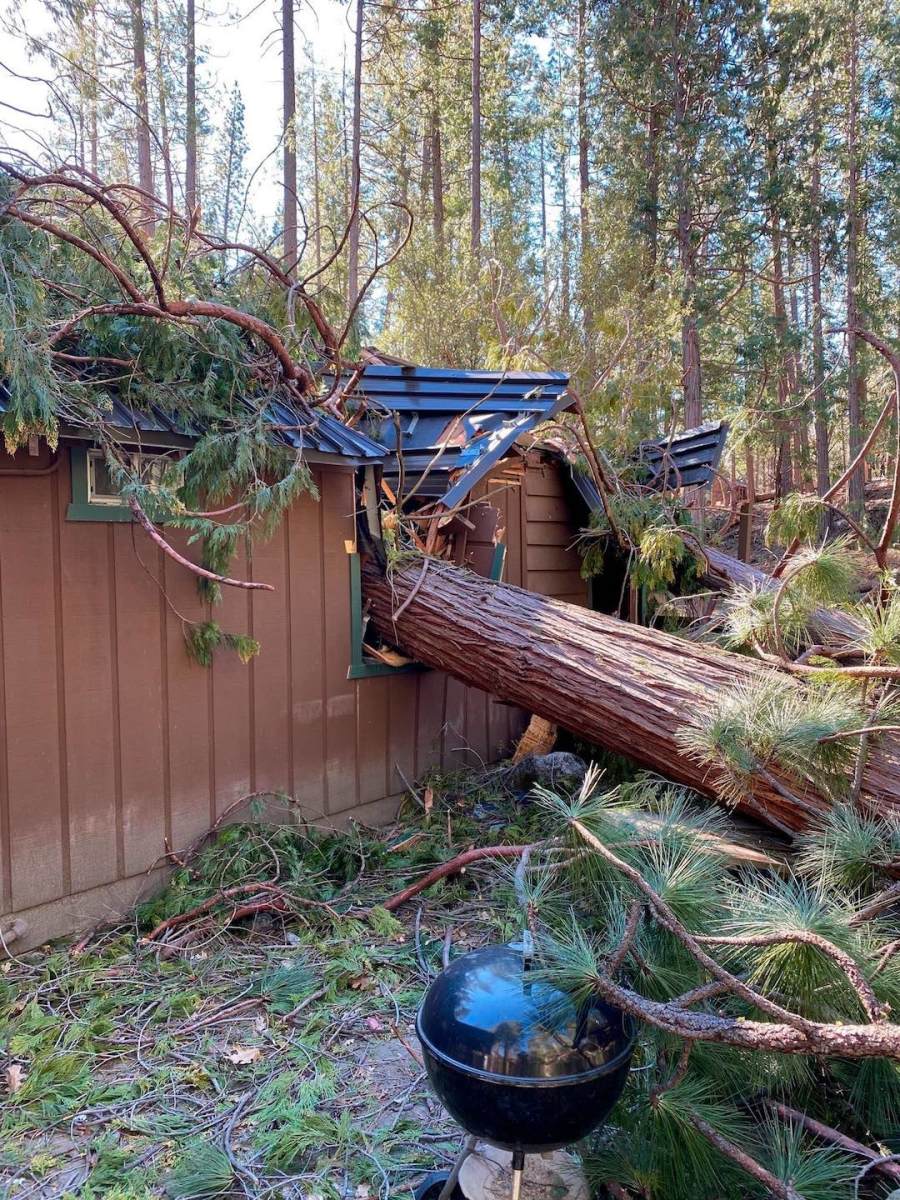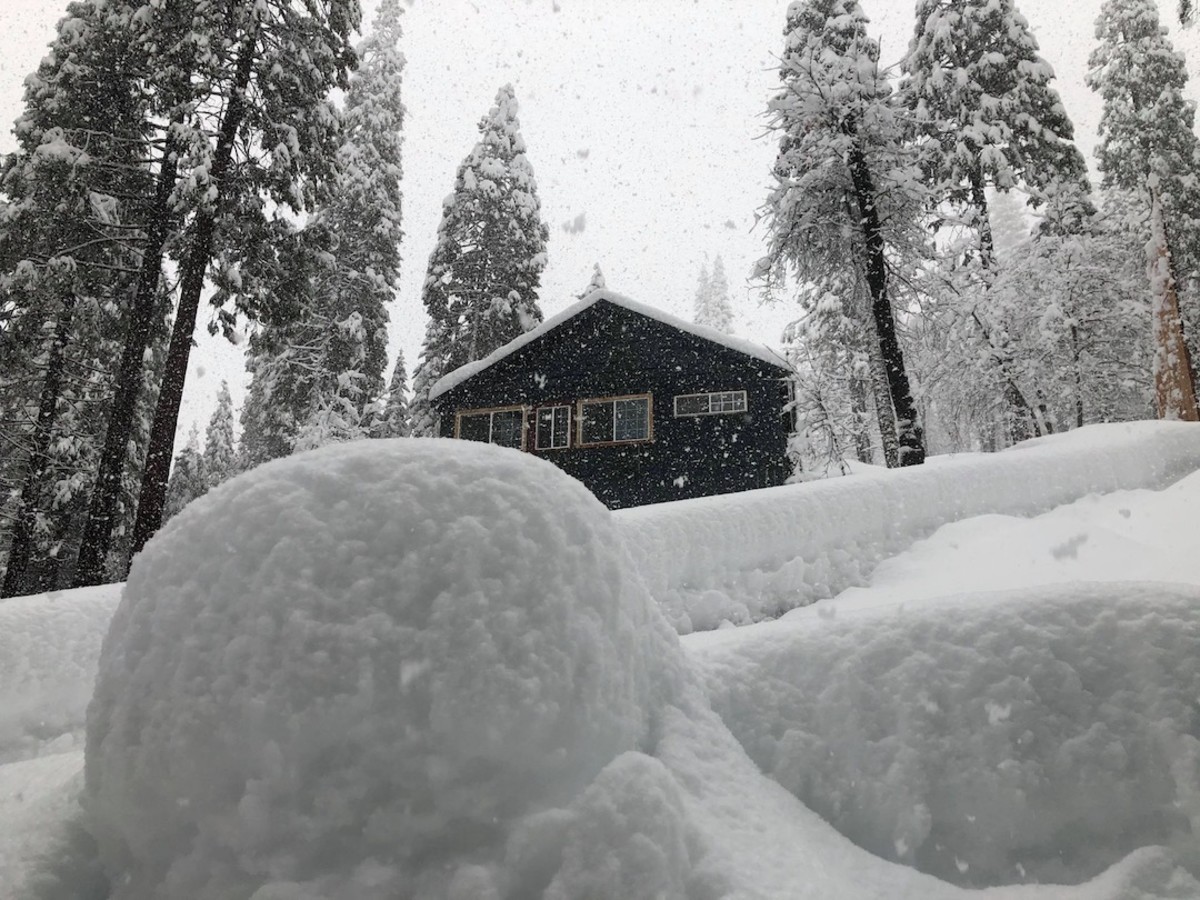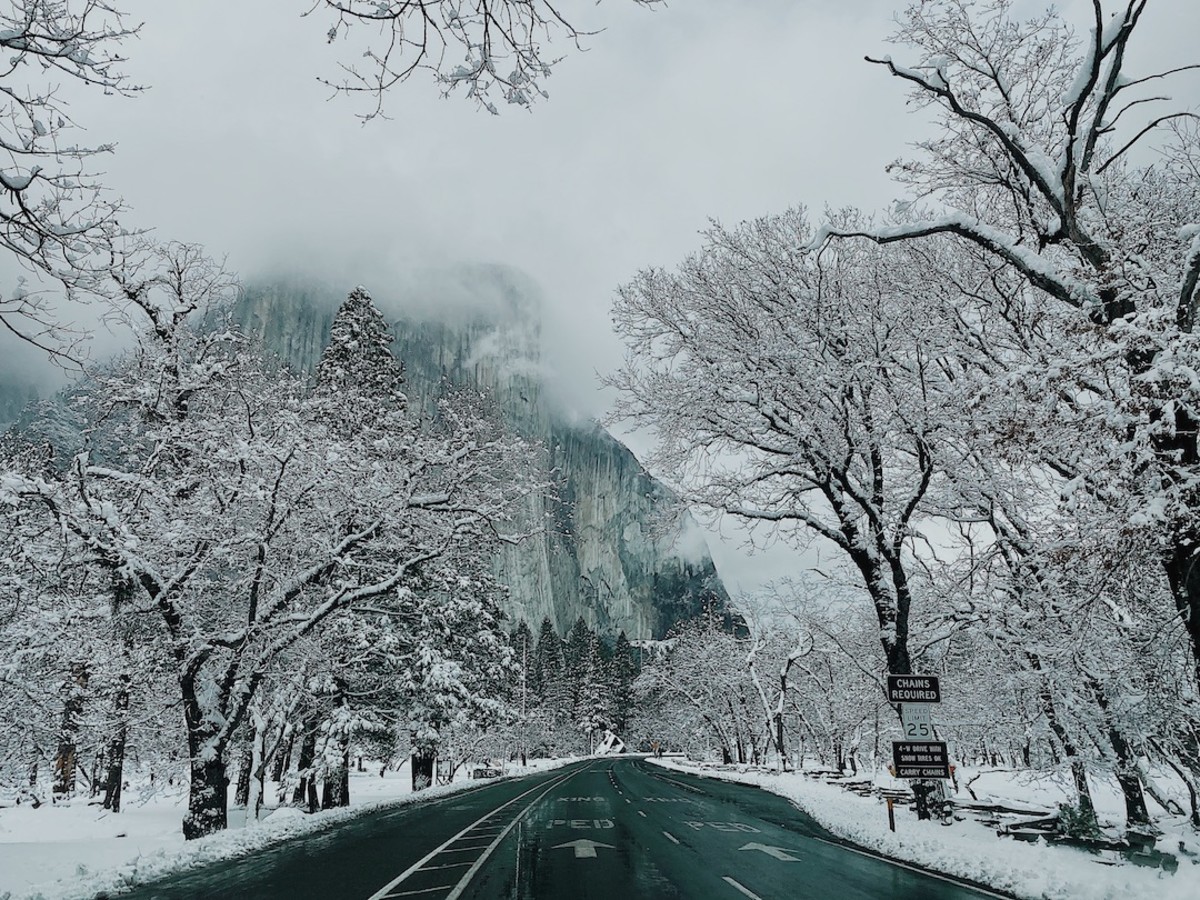Weeks of unusually clear, warm weather turned blustery and frigid recently in Yosemite Valley and the Sierra foothills. It began with the Mono wind event that brought gusts up to 100 mph and toppled trees onto park facilities and private homes. Days later, an atmospheric river flowed in from the Pacific. The storm dropped, in some places, 10 feet of wet, heavy snow and caused further damage. There are no reports of injuries.
“We have extensive damage in the park, millions and millions of dollars,” Scott Gediman told the Mercury News. Calls to Gediman by Men’s Journal were not returned.
View this post on Instagram
The storm, damage-wise, is being compared to the historic flood of 1997 that caused $200 million in damages. That flood brought the highest water to the Park in 80 years, damaged campgrounds and employee housing, and caused the Park to be evacuated.
On January 18 and 19, Mono winds tore through Yosemite National Park and the gateway towns on the Park’s west entrances, snapping trees and powerlines, and crushing park facilities and cars. Compounding the wind event’s damage, the same area received heavy snowfall this past week via an atmospheric river. Due to the extensive damage, the Park remains closed until February 1, at the earliest.
Combined, the damage includes dozens upon dozens of downed trees in Yosemite Valley and 15 downed giant Sequoia trees in the Mariposa Grove, reports Mercury News. The Mariposa Grove is home to 500 giant sequoias. Gediman told Mercury News that 20 homes and 20 cars were damaged in Wawona. Fallen trees resulted in leveled houses in Wawona, Mariposa and Sugar Pine.

Mariposa declared a local emergency due to property damage and damage to roads and bridges. Down the street from where I live, numerous oak trees lay splintered across properties and over downed power lines. “I saw extensive powerline carnage, and most of the damage was on Triangle Road” said Aaron Martin, a pilot for Capitol Helicopters. The company was contracted by PG&E to assess the damage in Mariposa after the Mono wind event.
“I’ve heard of a lot of tree failure that’s crushed cars and property,” an anonymous local source told me. “That Mono wind event made it way worse. Maybe that shook a bunch of stuff loose, and then it got weighed down with all that snow. Then it just falls.”
Another source in the Park told me he saw 18 inches of heavy, wet snow on the Valley floor out of his office window.

The damage resulted in a week-long power outage in Yosemite, Mariposa, and Sugar Pine. Shortly after the power was restored, some areas lost it again when the season’s biggest storm poured in.
“We lost 10 trees on the property, including a 220-foot Douglas Fir,” said Sugar Pine resident Jason Torlano. Sugar Pine is at 4,400 feet. “We lost power at the wind event, got power for two days, and then lost it again. The power is still out, and it may stay out for five-plus days. And it’s still snowing.
“I hear the trees are a nightmare in Yosemite.”
Torlano, 45, grew up in Yosemite Valley and says that wind events come to the area every few years, but he’s never seen anything like this.
View this post on Instagram
January brought a triple threat to Torlano and his family – early in the month, unusually warm, dry conditions had him worried about fires. He was still reeling from the 379,895-acre Creek Fire that nearly burned his home last autumn. Warm temperatures followed this — shorts and tee shirt weather for weeks in January — followed by the Mono wind event. A week of heavy falling snow followed.
“It’s never normal here anymore,” Torlano adds. “It’s either 70 degrees or there’s five feet of snow on the ground.”
Says YosemiteNPS on Instagram, “Yosemite’s road crews continue to do an amazing job to clear park roads and parking areas. However, with ongoing falling snow and tree failures, it is not safe for the Park to reopen.”

Yosemite will reopen on February 1 at the earliest, and when it does, it will be open 24 hours a day. The Ahwahnee Hotel and Yosemite Lodge will open February 5 and Upper Pines Campground will open February 8. Highway 41, which accesses the Badger Pass Ski Resort (closed for the season), Wawona, and Mariposa Grove will remain closed.
Due to the pandemic, day-use permits will be required for all visitors, click here, and masks are required due to an executive order. The permit system will stay in place at least until February 28. Facilities remain limited, and the shuttles are not running.
Click here to learn more here about traveling to Yosemite during the pandemic.
from Men's Journal https://ift.tt/39Aua8h

No comments:
Post a Comment